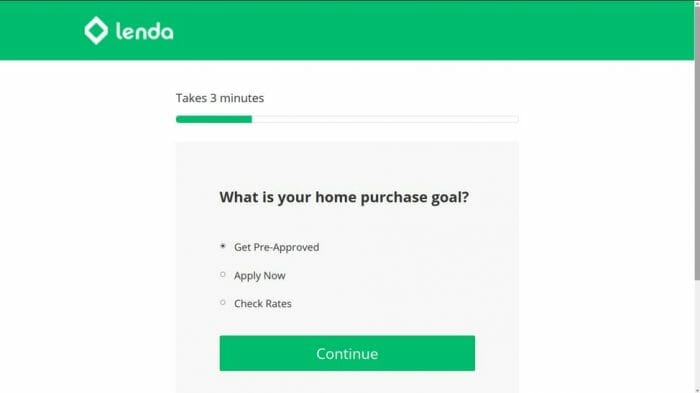Starting in January 2014, the Client Monetary Safety Bureau, or CFPB, issued new guidelines to guard mortgage debtors. The foundations deal primarily with what is called the “servicing” aspect of the mortgage course of. That’s all the things that occurs after a mortgage closes, from establishing escrows and crediting funds to foreclosures.
There are 9 guidelines in all. Their objective is to “present householders and shoppers purchasing for a house mortgage with new rights and higher safety from dangerous practices.” Let’s see what every one is about.
In This Article:
- 1. Periodic Billing Statements
- 2. Curiosity Charge Adjustment Notices for ARMS
- 3. Fee Crediting and Payoff Statements
- 4. Pressure-place Insurance coverage
- 5. Error Decision and Data Requests
- 6. Common Servicing Insurance policies, Procedures and Necessities
- 7. Early Intervention With Delinquent Debtors
- 8. Continuity of Contact with Delinquent Debtors
- 9. Loss Mitigation Procedures
1. Periodic Billing Statements
Mortgage lenders should present periodic statements to debtors for every billing cycle. These ought to replicate data on funds presently due and beforehand made, charges imposed, transaction exercise, utility of previous funds, contact data for the servicer and housing counselors , and, the place relevant, data concerning delinquencies.
The periodic assertion doesn’t apply to fixed-rate mortgages, so long as the the servicer gives a coupon e-book. Additionally, the coupon e-book should comprise sure data as specified within the rule and that data have to be made obtainable to the patron.
2. Curiosity Charge Adjustment Notices for ARMS
If a mortgage is an adjustable fee mortgage (ARM), it accommodates provisions for periodic modifications within the rate of interest. If in case you have such a mortgage, the lender should give you written discover of a fee change between 210 and 240 days earlier than the preliminary change is ready to happen. They’re then required to supply discover of subsequent fee and cost modifications, between 60 and 120 days prematurely of the change. The discover should embody an estimate of each the brand new fee and the brand new cost.
3. Fee Crediting and Payoff Statements
Lenders should credit score mortgage funds from debtors as of the day of receipt. Nevertheless, if a cost is acquired for lower than the complete quantity, the cost could also be held in a suspense account. When the quantity within the suspense account covers a periodic cost, the servicer should apply the funds to the patron’s account.
The lender can also be required to ship an correct payoff stability to a shopper when requested. They don’t have any later than seven enterprise days from receipt of a borrower’s written request to supply that data.
4. Pressure-place Insurance coverage
Up to now, lenders engaged in a apply generally known as force-place insurance coverage. That was a apply wherein the lender would get a house owner’s insurance coverage coverage on the property securing the mortgage, if it believed that the debtors had allowed their coverage to lapse. This typically resulted in high-priced insurance policies, which had been then charged to the borrower.
Below the brand new guidelines, lenders are prohibited from charging a borrower for force-place insurance coverage until the lender has trigger to consider the borrower has failed to keep up insurance coverage. They have to additionally present the debtors with required notices.
The lender should present the borrower with written discover of the force-place coverage a minimum of 45 days earlier than charging the borrower for the protection. They have to additionally present a second discover a minimum of 30 days after the primary, and a minimum of 15 days earlier than charging the borrower for the protection.
If the borrower gives proof {that a} home-owner’s insurance coverage coverage exists, the lender should cancel the force-place coverage. They have to additionally refund any premiums paid on the coverage throughout overlapping intervals of protection. As well as, the price of the force-place coverage have to be affordable for the quantity of protection in power.
If there’s an escrow account connected to the mortgage which incorporates the cost of home-owner’s insurance coverage premiums, the lender is prohibited from acquiring force-place insurance coverage. If the servicer can proceed the borrower’s home-owner insurance coverage, even when they should advance funds to the borrower’s escrow account to take action, they need to go that route.
5. Error Decision and Data Requests
Lenders are actually required to reply to written requests for data, in addition to complaints of errors. The lender should adjust to error decision procedures for errors which might be spelled out within the new guidelines. This contains any errors which might be the results of the servicing of the mortgage.
Lenders are required to acknowledge receipt of the borrower’s written notification inside 5 days of receipt. Lenders then have 30 to 45 days to reply to the borrower’s request. Inside that point, they need to both appropriate the error claimed by the borrower, or conduct an investigation to find out that no error exists. If the latter happens, they need to then inform the borrower in writing.
If data requested by the borrower isn’t obtainable, the lender should notify the borrower in writing. This discover should embody an evidence as to why the knowledge isn’t obtainable.
6. Common Servicing Insurance policies, Procedures and Necessities
Lenders are required to ascertain insurance policies and procedures which might be designed to adjust to the brand new guidelines. Meaning they need to spell out how they’ll accomplish the next:
- Accessing and offering correct and well timed data to debtors, traders, and courts
- Correctly evaluating loss mitigation purposes in accordance with the eligibility guidelines established by traders
- Facilitating oversight of, and compliance by, lenders
- Facilitating switch of data throughout servicing transfers
- Informing debtors of the supply of written error decision and data request procedures
Every lender should additionally keep sure paperwork and data for every mortgage mortgage. This have to be accomplished in a approach that allows them to compile it right into a servicing file inside 5 days.
7. Early Intervention With Delinquent Debtors
Lenders are required to intervene within the occasion {that a} borrower could also be heading for default. The lender should make “good religion efforts” to ascertain dwell contact with debtors by the thirty sixth day of their delinquency. They’re required to promptly inform debtors that loss mitigation choices could also be obtainable. The lender should additionally present the borrower written discover with details about loss mitigation choices by the forty fifth day of a borrower’s delinquency.
8. Continuity of Contact with Delinquent Debtors
Lenders are actually required to make early contact with debtors who’re prone to default. That contact should even be on a unbroken foundation. As soon as once more, the lender have to be totally ready to help the delinquent borrower with loss mitigation choices the place they’re obtainable.
The lender should make affordable efforts to make sure that personnel are assigned to a delinquent borrower by the point written discover of early intervention is required. This may be no later than 45 days after a borrower’s delinquency.
As well as, the assigned personnel have to be accessible to the debtors by cellphone to help with loss mitigation choices. This contains advising the borrower on the standing of a loss mitigation utility, in addition to anticipated timelines. These personnel are additionally anticipated to have entry to the entire data surrounding the borrower’s state of affairs. This data may be shared with different personnel who’re accountable for evaluating the loss mitigation choices obtainable to the debtors.
9. Loss Mitigation Procedures
This rule will get to the guts of the try by the CFPB to supply the debtors with extra choices and protections within the occasion of foreclosures. The debtors have to be given each alternative to keep away from foreclosures by loss mitigation.
The lender should comply with particular loss mitigation procedures. For instance, the lender is required to acknowledge the receipt of a loss mitigation utility in writing, inside 5 days of receipt. They have to additionally inform the borrower whether or not or not the applying is full. The borrower have to be apprised of any lacking data.
If the finished loss mitigation utility is acquired greater than 37 days earlier than a foreclosures sale, the lender is required to judge mitigation choices inside 30 days. This should embody choices that may allow the debtors to retain their dwelling. It should additionally embody non-retention choices, corresponding to a brief sale.
The lender is required to supply the debtors with written notification of the choice in regard to loss mitigation. This contains the explanations for denying the applying. The borrower should additionally be capable to enchantment the denial, beneath the availability that the entire loss mitigation utility is acquired a minimum of 90 days earlier than the scheduled foreclosures sale.
This rule additionally prevents what is called twin monitoring. That’s a apply wherein the lender is concurrently evaluating a borrower for mortgage modifications or different mitigation choices, on the identical time that it’s getting ready to foreclose on the borrower’s property. The rule prohibits the lender from making the primary discover or from submitting necessities for the foreclosures course of till the mortgage account is greater than 120 days overdue.
However even when a borrower is greater than 120 days late, the lender might not start foreclosures proceedings if the borrower has submitted a accomplished loss mitigation utility earlier than the foreclosures course of has begun. This rule applies until any of the next takes place:
- The lender notifies the borrower that they don’t seem to be eligible for any loss mitigation possibility. Additionally, all appeals have been exhausted
- A borrower rejects all loss mitigation affords
- A borrower fails to adjust to the phrases of a loss mitigation possibility, corresponding to a trial modification
Nevertheless, if the debtors submits a accomplished loss mitigation utility after the foreclosures course of has begun, however greater than 37 days earlier than a foreclosures sale, the lender might not transfer for a foreclosures judgment or order of sale, or conduct a foreclosures sale, till one of many three situations above has been met.
Basically, the CFPB Mortgage Safety Guidelines are designed to enhance the working relationship between debtors and their mortgage lenders. And it’s in the end hoped that the foundations will make the foreclosures course of each much less doubtless and fewer painful.
(Sources: What mortgage servicing guidelines apply to me?, What the brand new CFPB mortgage guidelines imply for households and householders, and Abstract of the ultimate mortgage servicing guidelines)
,





